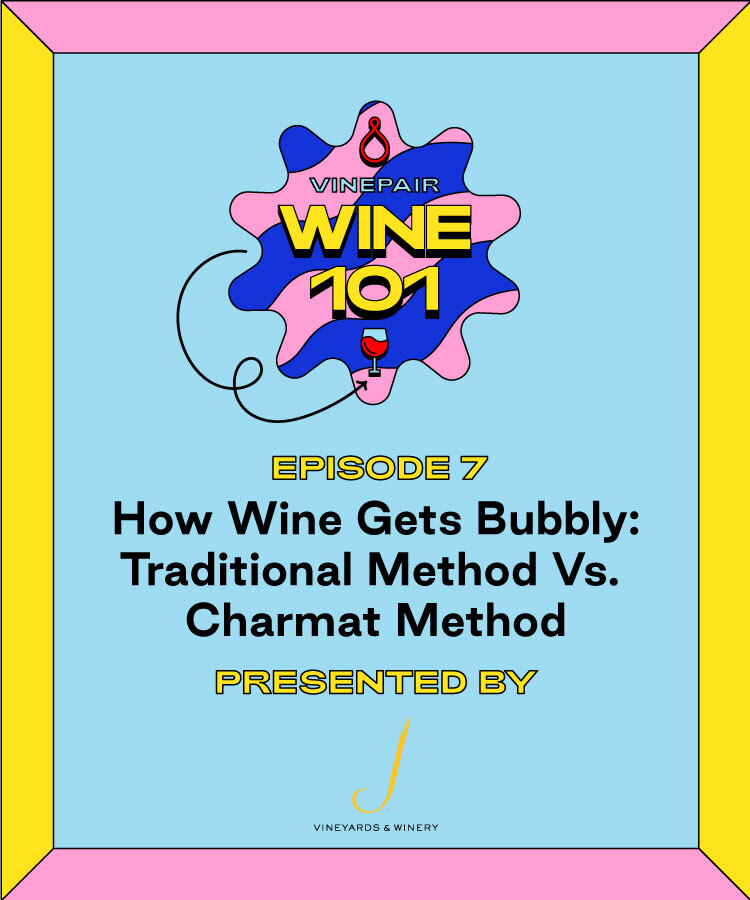
Inspired by one of VinePair’s most popular site sections, the Wine 101 podcast takes an educational, easy-to-digest look into the world of wine. This week’s episode is brought to you by J Vineyards & Winery. For over 30 years, J Vineyards and Winery has developed a reputation as one of the best sparkling and varietal wine producers in California. With styles from bright and bubbly to bold and complex, J Vineyards and Winery offers remarkable range and exceptional craftsmanship that you’re going to want to share. Uncork joy with J, and let life bubble over.
Welcome back to Wine 101. In this episode, VinePair tastings director Keith Beavers takes a look at the complex process of making sparkling wine. Prior to this episode, Beavers spoke with Nicole Hitchcock, winemaker at J Vineyards, to prepare a clear picture of the meticulous steps needed in this unique winemaking process. In the discussion, he articulates why sparkling wine can be just as varied as a still wine in sweetness, color, and level of alcohol. To differentiate sparkling wine from still wine, Beavers defines bubbles as “wine that involves the accumulation of gas under pressure in a bottle that was initially distilled wine.”
After briefly touching on the history of sparkling wine — and the accidental circumstances that earned it the name “The Devil’s Wine” — Beavers explains the two most common sparkling winemaking techniques: the traditional method (also known as the classic method), and the Charmat method (or tank method).
After listening to this episode, Wine 101 podcast subscribers will have a well-rounded understanding of the phases in the traditional method: the initial blending of the base wine, fermentation in bottle, riddling, disgorgement, dosage, and final corking. Listeners will also understand why sparkling wine is made best from high-acid grapes picked early during wine harvest.
